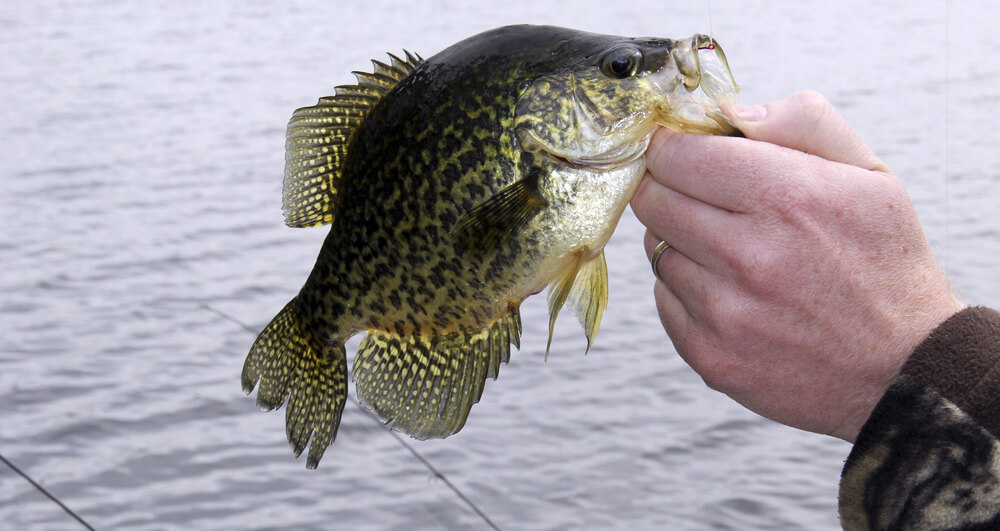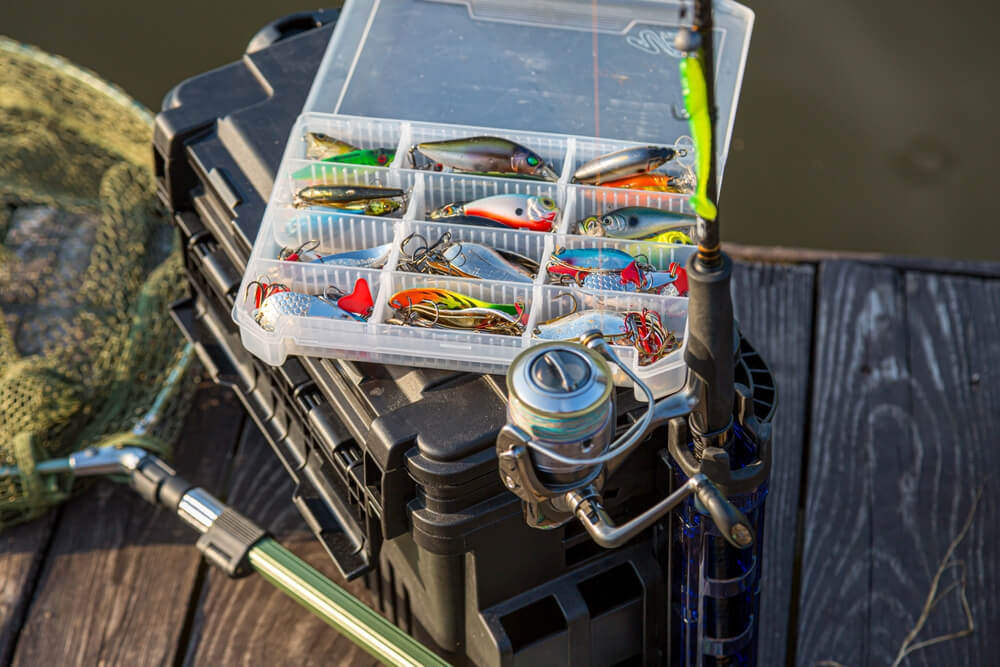
Crappie fishing is a beloved pastime for many anglers, offering both the thrill of the catch and the tranquility of nature. As a popular species among freshwater anglers, crappies are part of the panfish family and are known for their tasty fillets. To get started on your crappie fishing journey, it’s essential to understand some basic principles that will guide you through this rewarding activity.
First, familiarize yourself with the two main species: black crappie and white crappie. While they share similarities in habitat and behavior, subtle differences in appearance can help you identify them. Black crappies tend to have darker, more pronounced spots and prefer clearer waters with abundant vegetation. White crappies often inhabit murkier waters and have vertical bars along their sides.
Understanding their preferred habitats is crucial for successful fishing. Crappies thrive in lakes, reservoirs, and slow-moving rivers where they can find shelter among submerged structures like fallen trees or weed beds. During spawning season in spring, they move into shallow waters to nest, making them more accessible to shore anglers.
By familiarizing yourself with the foundational elements outlined in this crappie fishing guide, you’ll be well on your way to enjoying this popular form of freshwater angling. Whether you’re a seasoned angler or new to the sport, understanding these basics will enhance your overall experience on the water as you pursue one of America’s favorite panfish species.
Essential Gear for Successful Crappie Fishing

When it comes to crappie fishing, having the right gear can make all the difference between a successful outing and a frustrating day on the water. Understanding what crappie fishing equipment is essential can enhance your chances of landing more fish and enjoying the experience.
First and foremost, selecting the best rods and reels for crappie is crucial. Lightweight spinning rods ranging from 5 to 7 feet in length are ideal, as they offer sensitivity and flexibility needed for detecting subtle bites. Pair these with a light or ultralight spinning reel that provides smooth drag performance to handle crappie’s delicate mouths without ripping the hook out.
Your tackle box should be equipped with a variety of jigs, which are indispensable for crappie fishing. Small tube jigs or curly tail grubs in various colors can entice these fish effectively. Additionally, live bait such as minnows is a tried-and-true option that often yields great results.
Don’t forget about line selection; using 4 to 8-pound test monofilament or fluorocarbon line allows for better control and less visibility underwater. A well-organized tackle box must also include essentials like bobbers for maintaining bait at desired depths, split shots for weight adjustments, and extra hooks.
Investing in quality fishing gear essentials tailored specifically for crappie will improve your catch rates significantly while ensuring you’re prepared for any situation on your next fishing adventure.
Proven Tips and Techniques to Catch More Crappies
Catching more crappies requires a blend of knowledge, skill, and the right techniques. Whether you’re a seasoned angler or new to crappie fishing, understanding the nuances of this popular sport can significantly enhance your success on the water.
One of the most effective crappie fishing tips is mastering jigging techniques. Jigging involves using a weighted lure that mimics small fish movements, enticing crappies to bite. Varying your jigging speed and motion can make all the difference; sometimes a slow, steady lift and drop works best, while other times erratic movements are more effective in attracting attention.
When it comes to choosing between live bait and artificial lures, both have their advantages. Live bait such as minnows or worms often provide an irresistible allure due to their natural scent and movement. However, artificial lures offer versatility and convenience with options like soft plastics or crankbaits that can be tailored to specific conditions or preferences.
Trolling for crappies is another technique worth exploring. This method involves dragging multiple lines with different baits behind a moving boat to cover larger areas of water efficiently. By adjusting trolling speeds and experimenting with various depths and lure types, anglers can locate schools of crappies more effectively.
Understanding Seasonal Patterns and How They Affect Crappie Behavior
Understanding the seasonal patterns of crappie behavior is essential for any angler looking to optimize their fishing strategies throughout the year. As the seasons change, so do the habits and habitats of crappie, making it crucial to adapt your approach accordingly.
During the spawning season in spring, crappie move into shallow waters to lay their eggs. This period offers a prime opportunity for anglers as fish are more concentrated and active. Spawning season insights suggest using smaller jigs and live bait near vegetation or submerged structures where crappie are likely nesting.
As temperatures drop in winter, cold weather crappie tips come into play. Crappies tend to move deeper into warmer waters during this time, often congregating around underwater structures such as brush piles or ledges. Slow-trolling with minnows or using vertical jigging techniques can be particularly effective in attracting sluggish winter crappies.
When summer arrives, understanding summer crapping techniques becomes vital. Warm water increases fish activity but also disperses them across larger areas. Targeting shaded spots like docks or bridge pilings during early morning or late evening hours can yield successful catches when fish seek cooler temperatures.
By tailoring your fishing strategies to these seasonal patterns, you can enhance your chances of success and enjoy fruitful outings year-round while gaining a deeper appreciation for how environmental changes influence crappie behavior.
The Best Locations to Find Crappies in Lakes and Rivers
When it comes to crappie fishing, knowing the best locations can significantly enhance your chances of a successful catch. Crappies are known for their preference for specific habitats, making it essential to identify top crappie hotspots in both lakes and rivers.
In lake environments, crappies often congregate around structures such as submerged trees, brush piles, and docks. These lake fishing spots for crappies provide shelter and attract smaller fish that serve as their primary food source. During the spawning season, typically in spring, look for them in shallow waters near the shoreline where they nest.
Rivers offer a different dynamic but can be equally rewarding. River locations for crappie success often include backwaters and slow-moving pools where the current is less intense. Crappies tend to favor areas with plenty of cover like fallen logs or aquatic vegetation that provide protection from predators and strong currents.
Whether you’re exploring a serene lake or navigating a winding river, understanding these environments will help you pinpoint where the crappies are likely to be hiding. By focusing your efforts on these strategic locations, you’ll maximize your chances of reeling in an impressive catch.
Catch and Release Tips for Conservation-Minded Anglers
Sustainable fishing practices are essential for preserving aquatic ecosystems and ensuring that future generations can enjoy the thrill of angling. One of the most effective ways anglers can contribute to conservation efforts is by adopting catch and release methods. This approach allows fishermen to enjoy their sport while minimizing their impact on fish populations.
To practice responsible angling, it’s important to use appropriate gear that reduces harm to fish. Opt for barbless hooks, which are easier to remove and cause less injury. When handling a fish, wet your hands first to protect its slime coat, a crucial barrier against disease. Gently support the fish horizontally with both hands when lifting it out of the water, avoiding squeezing its body or touching its gills.
Time is critical in catch and release fishing; aim to minimize the duration a fish spends out of water. If you’re photographing your catch, have your camera ready beforehand so you can quickly snap a picture before returning the fish to its habitat. Revive exhausted fish by holding them upright in the water, allowing them time to regain strength before swimming away on their own.
Enhance Your Experience with These Effective Crappie Fishing Strategies Today!
As we conclude our exploration of effective crappie fishing strategies, it’s clear that a combination of knowledge, technique, and patience can significantly enhance your fishing experience. By understanding the seasonal behavior of crappie and selecting the right bait and tackle, you set yourself up for success on the water. Employing techniques such as jigging or trolling can increase your chances of landing a catch, while using electronics to locate schools of fish adds a modern twist to traditional methods.
It’s also important to remember that successful fishing often involves adapting to changing conditions. Weather patterns, water temperature, and time of day all play crucial roles in determining where crappie might be found. By staying observant and flexible in your approach, you’ll be better equipped to make the most out of each fishing trip.
Whether you’re a seasoned angler or new to crappie fishing, these strategies provide a solid foundation for improving your skills and enjoying more fruitful outings. So grab your gear, head out to your favorite spot, and put these tips into practice today!
